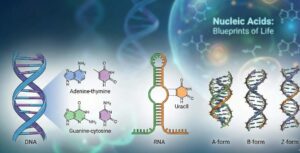
Welcome to the COMPETITIVE EXAM MCQs SERIES of ENVIRONMENTAL SCIENCE for UGC-NET/JRF, SLET, GATE, and other entrance tests – Environmental ethics: Concept-based.
Environmental ethics is the philosophical study of moral principles governing our relationship with the natural world. It seeks to answer fundamental questions about our ethical responsibilities toward the environment and the various living and non-living entities it encompasses. Therefore, it is important for the competitive examination such as UGC NET/JRF and SLET.
Syllabus Outline
- Philosophical examination of our moral responsibilities towards the environment.
- Primary ethical perspectives (e.g. anthropocentrism, biocentrism, ecocentrism).
- Ethical theories (e.g. utilitarianism, deontology, virtue ethics).
- Deep ecology, ecofeminism, and the intrinsic vs. instrumental value of nature.
- Rights of non-human entities, intergenerational ethics, biodiversity conservation, environmental justice movements, distributive justice, indigenous rights, climate justice, and environmental racism.
- Ethical principles in environmental policy-making and the impact of ethical activism on policy.
This quiz contains the concept-based most frequently asked 25 MCQs of “Environmental ethics“. Each question has a single correct/most appropriate answer.
1. According to the intrinsic value perspective, why should we protect the environment?
a) Because it promotes economic growth
b) Because it provides resources for human use
c) Because it has instrumental value for other species
d) Because it has inherent value regardless of its utility to humans
2. Which ethical theory in environmental ethics emphasizes the moral responsibility of humans to protect and preserve the diversity of life on Earth?
a) Deep ecology
b) Utilitarianism
c) Anthropocentrism
d) Shallow ecology
3. Which ethical perspective argues that humans should prioritize economic interests in land use decisions?
a) Land Ethic
b) Deep ecology
c) Utilitarianism
d) Biocentrism
4. Arrange the following steps correctly for applying the principle of deep ecology to environmental ethics:
1. Recognizing the intrinsic value of all living beings and ecosystems.
2. Identifying human activities that harm the natural world.
3. Challenging anthropocentrism and the belief in human superiority.
4. Cultivating a sense of ecological interconnectedness.
5. Advocating for policies and practices that protect the environment.
a) 1, 2, 3, 4, 5
b) 2, 1, 4, 3, 5
c) 2, 1, 3, 4, 5
d) 1, 2, 4, 3, 5
5. Which environmental ethics perspective argues that environmental protection is essential for human well-being and that a healthy environment is a fundamental human right?
a) Shallow ecology
b) Anthropocentrism
c) Deep ecology
d) Biocentrism
6. Arrange the following steps correctly for conducting an ethical analysis of an environmental issue:
1. Assessment of the consequences of various actions on the environment and stakeholders.
2. Identification of relevant ethical principles, values, and stakeholders.
3. Examination of potential alternative solutions or courses of action.
4. Application of ethical principles to evaluate the actions’ moral implications.
5. Formulation of a well-reasoned ethical judgment or recommendation.
a) 1, 2, 3, 4, 5
b) 2, 1, 4, 3, 5
c) 2, 1, 3, 4, 5
d) 1, 2, 4, 3, 5
7. According to environmental ethics, what is the primary concern of ecofeminism?
a) The economic benefits of environmental conservation
b) The preservation of wilderness areas
c) The promotion of human-centred values
d) The relationship between the oppression of women and the exploitation of nature
8. What does the Leopold Matrix aim to assess in environmental decision-making?
a) Economic costs and benefits
b) Environmental impact and sustainability
c) Ethical principles and values
d) Social acceptance of policies
9. What is the primary goal of environmental pragmatism in ethical decision-making?
a) Promoting environmental regulations regardless of economic consequences
b) Focusing exclusively on ecological preservation
c) Balancing environmental and economic concerns through practical solutions
d) Identifying the most cost-effective environmental solutions
10. What is the primary goal of ecological pragmatism in ethical decision-making?
a) Delaying environmental action until more data is available
b) Identifying the most cost-effective environmental solutions
c) Balancing environmental and economic concerns through practical solutions
d) Focusing exclusively on ecological preservation
11. What does the term intergenerational equity refer to?
a) Equal opportunities for all generations
b) Equitable treatment of people from different generations
c) Ethical obligations towards future generations
d) Fair distribution of resources among different age groups
12. In environmental ethics, what does the Golden Rule advocate for?
a) Dominance and control over natural resources
b) Maximum economic benefit from the environment
c) Preservation of pristine wilderness
d) Reciprocity and ethical behaviour toward nature
13. Arrange the following steps correctly for developing an environmental ethics framework:
1. Examination of ethical theories and principles relevant to the environment.
2. Identification of specific environmental issues and dilemmas.
3. Application of ethical principles to address environmental concerns.
4. Evaluation of the ethical framework’s effectiveness in guiding environmental decision-making.
5. Formulation of ethical guidelines or principles for environmental behaviour.
a) 1, 2, 3, 4, 5
b) 1, 2, 4, 3, 5
c) 2, 1, 4, 3, 5
d) 2, 1, 3, 5, 4
14. Assertion (A): Biocentrism asserts that all living beings, not just humans, have intrinsic value.
Reasoning (R): Biocentrism is a form of anthropocentrism that places human interests above all other species.
a) Both A and R are true, and the R is the correct explanation of the A.
b) A is true, but the R is false.
c) Both A and R are true, but the R is not the correct explanation of the A.
d) A is false, but the R is true.
15. What ethical principle suggests that environmental policies and decisions should prioritize justice, fairness, and the protection of vulnerable communities?
a) Environmental pragmatism
b) Justice and Equity
c) Minimal regulation
d) Non-maleficence
16. Which philosopher is known for developing the Land Ethic, emphasizing the moral responsibility of humans toward the land?
a) Rachel Carson
b) John Muir
c) Aldo Leopold
d) Garrett Hardin
17. What ethical perspective argues that nature has intrinsic value and should be protected regardless of its utility to humans?
a) Utilitarianism
b) Anthropocentrism
c) Biocentrism
d) Virtue ethics
18. Arrange the following steps correctly for promoting environmental ethics education:
1. Development of educational materials and curriculum.
2. Implementation of environmental ethics programs in schools and universities.
3. Assessment of the effectiveness of environmental ethics education.
4. Identification of the target audience and their specific needs.
5. Integration of environmental ethics into existing educational frameworks.
a) 1, 4, 5, 2, 3
b) 4, 1, 5, 2, 3
c) 4, 1, 2, 5, 3
d) 1, 4, 2, 5, 3
19. Which ethical perspective in environmental ethics aligns most closely with the concept of inherent worth and the idea that nature has intrinsic value?
a) Deep ecology
b) Biocentrism
c) Utilitarianism
d) Shallow ecology
20. Which environmental ethics perspective emphasizes the interconnectedness of social justice and sustainability?
a) Ecofeminism
b) Deep ecology
c) Shallow ecology
d) Anthropocentrism
21. What is the primary focus of anthropocentrism in environmental ethics?
a) Preserving pristine wilderness areas
b) Valuing the rights of non-human animals
c) Protecting endangered species
d) Promoting human interests and well-being
22. Assertion (A): As proposed by Aldo Leopold, the Land Ethic suggests that humans should prioritize economic interests in land use decisions.
Reasoning (R): The Land Ethic advocates for the responsible and ethical treatment of the land, recognizing its intrinsic value.
a) A is true, but the R is false.
b) A is false, but the R is true.
c) Both A and R are true, but the R is not the correct explanation of the A.
d) Both A and R are true, and the R is the correct explanation of the A.
23. Arrange the following steps correctly for integrating environmental ethics into policy development:
1. Identify key stakeholders and their interests.
2. Evaluation of the ethical implications of various policy options.
3. Formulation of policy recommendations that align with ethical principles.
4. Analysis of the environmental issue and its context.
5. Public consultation and engagement to gather input on proposed policies.
a) 4, 1, 5, 2, 3
b) 4, 1, 2, 5, 3
c) 1, 4, 2, 5, 3
d) 1, 4, 5, 2, 3
24. Which environmental ethicist introduced ecological footprint as an indicator of environmental impact and sustainability?
a) Aldo Leopold
b) Garrett Hardin
c) Rachel Carson
d) William Rees
25. Assertion (A): Ecofeminism argues that the oppression of women is unrelated to the exploitation of nature.
Reasoning (R): Ecofeminism highlights a connection between the oppression of women and the exploitation of nature, both rooted in domination and control.
a) A is false, but the R is true.
b) Both A and R are true, but the R is not the correct explanation of the A.
c) A is true, but the R is false.
d) Both A and R are true, and the R is the correct explanation of the A.
Previous: Environmental education and awareness
Next: Concept of sustainable development
References
- Desjardins, J. R. (2014) Environmental Ethics: An Introduction to Environmental Philosophy, Wadsworth Publishing, 5th edition.
- Sharma, A. K. (2018) Environmental Ethics: Issues and Perspectives, Kalpaz Publications, 1st edition.

